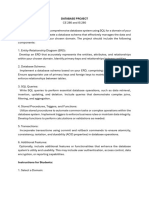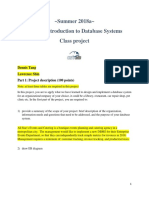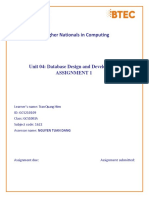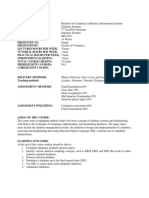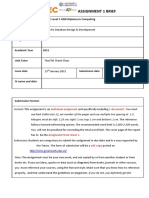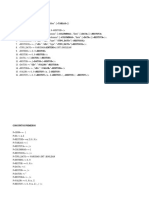0% found this document useful (0 votes)
18 views4 pagesIT 3rd Y Database Assignment
The document outlines the assignment for a third-year computer science course on database design and SQL, detailing the various stages of database development including requirements gathering, conceptual design, logical design, physical design, implementation, and testing. Each stage includes specific activities such as stakeholder interviews, creating entity-relationship diagrams, normalizing data, selecting a database management system, and conducting performance testing. The assignment emphasizes the importance of defining both functional and non-functional requirements throughout the database design process.
Uploaded by
lincolngift07Copyright
© © All Rights Reserved
We take content rights seriously. If you suspect this is your content, claim it here.
Available Formats
Download as DOCX, PDF, TXT or read online on Scribd
0% found this document useful (0 votes)
18 views4 pagesIT 3rd Y Database Assignment
The document outlines the assignment for a third-year computer science course on database design and SQL, detailing the various stages of database development including requirements gathering, conceptual design, logical design, physical design, implementation, and testing. Each stage includes specific activities such as stakeholder interviews, creating entity-relationship diagrams, normalizing data, selecting a database management system, and conducting performance testing. The assignment emphasizes the importance of defining both functional and non-functional requirements throughout the database design process.
Uploaded by
lincolngift07Copyright
© © All Rights Reserved
We take content rights seriously. If you suspect this is your content, claim it here.
Available Formats
Download as DOCX, PDF, TXT or read online on Scribd
/ 4








